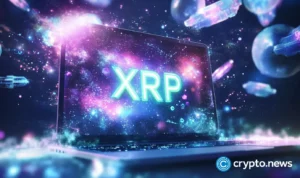Staying informed in the fast-paced world of cryptocurrency is crucial, especially when it comes to asset details listed on major trading platforms. Recently, the Upbit crypto exchange made an announcement that caught the attention of many traders and enthusiasts: an IOTA update regarding its circulating supply.
Upbit, a prominent South Korean digital asset exchange, officially stated on its website that it has revised the IOTA circulating supply plan. This adjustment was made following a direct request from the IOTA project team itself. While this might sound like a technical detail, understanding what circulating supply means and why its accurate reflection on an exchange is important is key for any investor.
What is Circulating Supply and Why Does it Matter?
In simple terms, the circulating supply of a cryptocurrency refers to the number of coins or tokens that are publicly available and circulating in the market. Think of it like the number of shares of a company that are currently held by investors, rather than those held by the company itself or locked up.
This metric is vital for several reasons:
- Market Capitalization Calculation: Market Cap is often calculated by multiplying the current price per coin by the circulating supply. An inaccurate supply figure leads to an incorrect market cap, potentially misleading investors about the project’s size and ranking.
- Scarcity and Value Perception: A lower circulating supply relative to total supply can sometimes suggest greater scarcity, which can influence price perception.
- Transparency and Trust: Accurate reporting by exchanges based on project data builds trust in the platform and the listed asset.
- Comparison with Other Assets: Investors compare assets based on various metrics, and circulating supply is a standard one used alongside total supply and maximum supply.
When a major exchange like Upbit updates this figure, it signals a commitment to providing accurate data to its users, directly reflecting information provided by the asset’s development team.
Why Did IOTA Request This Update?
Cryptocurrency projects, including IOTA, often have dynamic tokenomics. This means the number of tokens in circulation can change over time due to various factors:
- Tokens being unlocked from vesting schedules.
- Tokens being burned (permanently removed from supply).
- Tokens being distributed through staking rewards, airdrops, or other mechanisms.
- Changes in how tokens held by foundations or teams are classified (circulating vs. non-circulating).
The specific reasons behind IOTA’s request for this particular IOTA update on Upbit weren’t detailed in the initial announcement, but it’s standard practice for projects to communicate changes in their supply metrics to exchanges to ensure consistency across platforms and data providers.
How Does Upbit Handle Such Updates?
A reputable crypto exchange like Upbit has procedures in place for handling project-requested data updates. Typically, this involves:
- Receiving the formal request and updated data from the project team (in this case, IOTA).
- Verifying the provided information to the best of their ability, often cross-referencing with public blockchain data or official project statements.
- Updating their internal systems and the data displayed on their platform (website, app).
- Making an official announcement to inform their users about the change.
This process ensures that the information users see on the Upbit platform regarding IOTA’s circulating supply is the most current and accurate representation provided by the project itself.
What Are the Implications for Upbit Users and IOTA Holders?
For users trading IOTA on Upbit, the primary implication is that the market data they view, particularly market capitalization figures derived from circulating supply, will now be more accurate according to the IOTA project team’s latest plan. This increased accuracy contributes to a more reliable trading environment.
For IOTA holders, this Upbit update serves as a confirmation that the project team is actively communicating with major exchanges to ensure data integrity. It reinforces the importance of relying on official sources for tokenomics information rather than potentially outdated data aggregators.
Actionable Insight: Where to Find Reliable Data?
Always prioritize official sources:
- The project’s official website and documentation (IOTA’s official channels).
- Official announcements from the exchanges where you trade (like the announcement on the Upbit website).
- Reputable blockchain explorers specific to the asset.
While data aggregators are convenient, they sometimes lag behind official updates.
The Bigger Picture: Transparency in Crypto Data
This event highlights the ongoing efforts within the cryptocurrency space to improve data transparency and accuracy. As the industry matures, the reliability of metrics like circulating supply becomes increasingly important for institutional investors and retail traders alike.
Exchanges like Upbit play a critical role as gateways to the market, and their commitment to reflecting accurate project data is a positive sign for the ecosystem’s health and credibility. The IOTA update on Upbit is a small but significant example of this collaborative effort between projects and platforms.
In conclusion, Upbit’s announcement about updating the IOTA circulating supply plan is a straightforward piece of news with important underlying implications. It underscores the dynamic nature of tokenomics, the need for accurate data reporting by exchanges, and the importance of projects actively communicating changes. For anyone involved with IOTA or trading on Upbit, this ensures the data used for analysis and decision-making is based on the latest information provided by the project team.
To learn more about the latest IOTA and crypto market trends, explore our article on key developments shaping IOTA price action.
Disclaimer: The information provided is not trading advice, Bitcoinworld.co.in holds no liability for any investments made based on the information provided on this page. We strongly recommend independent research and/or consultation with a qualified professional before making any investment decisions.
Read the full article here










